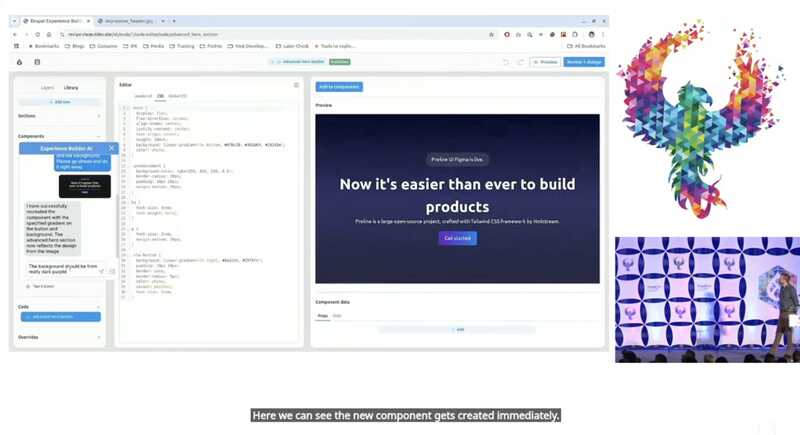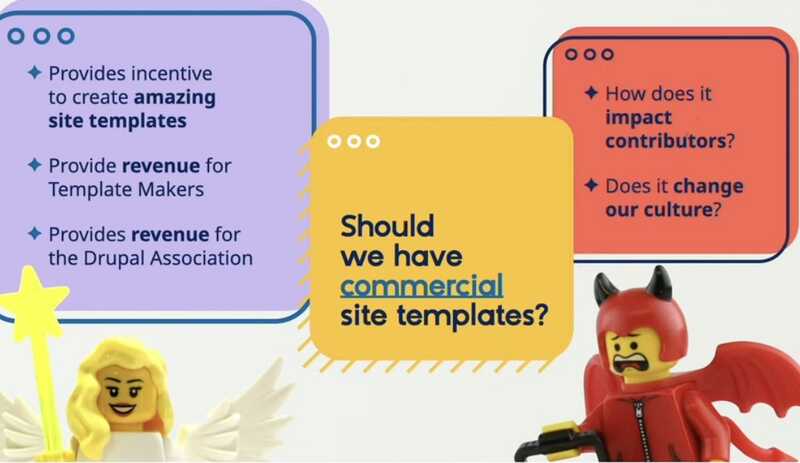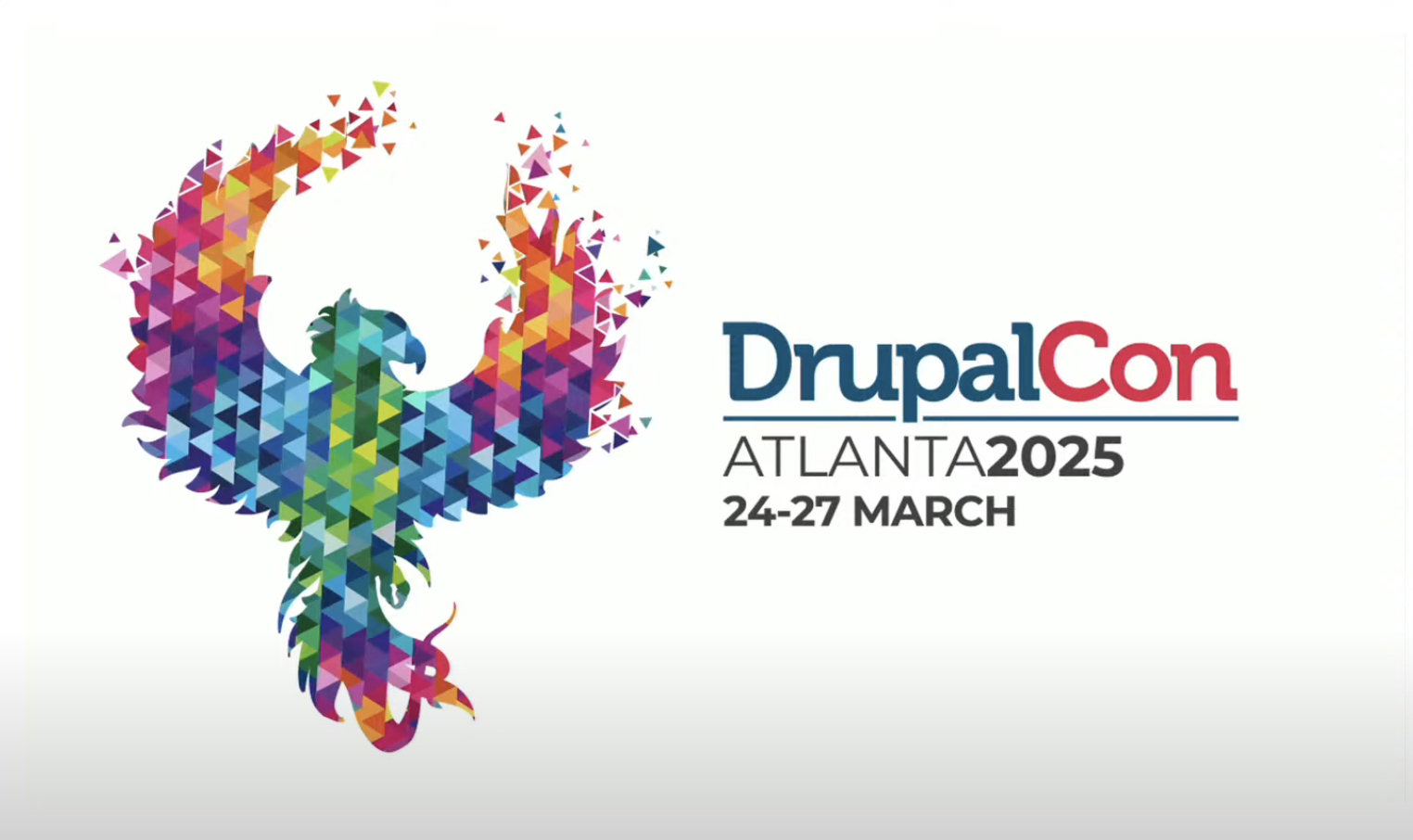The atmosphere at DrupalCon Atlanta 2025 was electric, especially during the much-anticipated DriesNote. In his update on the state of Drupal, founder Dries Buytaert shared reflections, celebrated milestones, and laid out the ambitious roadmap for the future of Drupal. Read the key takeaways or watch the recording of the whole keynote below.
Drupal CMS 1.0: A Major Milestone—But Not the Finish Line
Eleven months after announcing the Drupal CMS initiative, the community delivered. Drupal CMS 1.0 launched on January 15, 2025, just eight months after the initiative was kicked off. This milestone was marked by launch parties around the world, drawing newcomers, long-time contributors, and agency partners alike. It wasn’t just a release—it was a celebration.
Dries emphasized that Drupal doesn’t chase trends—we set them. And Drupal CMS is proof of that. The release reorients the platform around editor experience and usability, making Drupal more appealing to marketers, content teams, and first-time users.
But this is just the beginning. As Dries said, “Drupal CMS 1.0 is a milestone, not the finish line.”
Choosing Growth
One of the most powerful themes of the keynote was about intentional growth. Dries reminded us that “decline is a choice.” The community can either stay in its comfort zone or choose to evolve. In a world filled with newer, shinier CMSs, what sets Drupal apart is its commitment to open source, privacy, flexibility, and the open web.
The open web needs us. And thanks to this global, diverse community—not just developers, but marketers, strategists, and business leaders—we’re continuing to show up and move Drupal forward.

Experience Builder: The Next Big Milestone
One of the most exciting parts of the keynote was the demo of the soon-to-be-released Experience Builder by contributor Balint Kéri. It promises a far more immersive and user-friendly editing experience than what’s currently available in Drupal. Key features include:
- Auto-saving drafts across pages
- Multi-page content changes that can be published together
- Flexible content sections that can be reused and customized
- Global regions for shared components like headers and footers
- A visual, drag-and-drop interface with layered editing
- A modern, fast interface that feels instant, reducing the time it takes to experiment when building content
Dries noted: “People will switch to Drupal for Experience Builder.” It’s that big.
And front-end developers haven’t been left behind—Experience Builder allows you to create components using traditional Drupal blocks, with a built-in code editor. It includes support for Tailwind CSS, live previews, and a configuration UI, all within the browser—no dev environment required. Components can be saved, reused, and even shared across environments as config entities. Some of you might’ve seen this in action during our Drupal Theming with SDC and TailwindCSS training at DrupalCon on Monday—we had a blast digging into modern theming workflows and how much easier things are getting.
Making Drupal Easier: Onboarding, Desktop App & Accessibility
The commitment to "Make it easier" was a recurring theme. The team introduced new ways to try Drupal CMS with no installation required—just fill out a form and launch a sandbox. Thousands have already tried it.
For developers, a new Drupal CMS Desktop App, created by Gábor Hojtsy, is currently available on GitHub. It includes everything needed to spin up Drupal locally on macOS and Windows, without Composer or CLI experience.
Drupal CMS and the Future of Site Building
Dries announced that there’s a plan to add site templates to Drupal CMS. These use-case-specific templates will make it faster to build a website with pre-built features that are already adapted to your needs. Examples might be a conference website, portfolio site, or corporate blog, but could expand to cover hundreds of use cases.
With recipes, templates, and demo content, the goal of Drupal CMS is to offer pre-configured site experiences that help get functional, attractive websites to market much faster. Drupal CMS 2.0, will be released at DrupalCon Vienna in seven months, and will ship with the first set of templates. Over time, we can expect hundreds more, tailored to different industries and use cases.
AI Is the New UI
The keynote also spotlighted major growth in the Drupal AI community. Adoption has tripled, and more than 30 AI agents have already been built. The possibilities are exciting:
- Create components by uploading an image and letting the AI generate code
- Make CSS changes visually, then refine or undo suggestions
- Use AI agents to migrate Figma designs into fully themed Drupal sites
- AI agents that build other AI agents
Dries described this evolution as “AI is the new UI,” reflecting how AI will help users build and refine sites faster, more intuitively, and more creatively.

Should There Be a Drupal Marketplace?
Dries closed by asking a bold question: Should we have a Drupal Marketplace? Not just for open source templates and modules, but also to support paid offerings that could drive more growth, visibility, and opportunity for contributors, agencies, and the ecosystem as a whole. It’s a proposal with exciting potential, but also serious implications. Could it help sustain Drupal’s momentum, or risk shifting our open source culture? Would it empower more makers—or introduce friction and complexity? This isn’t a decision to take lightly, and it’s not one we’ll make alone. The community’s input is essential, and Dries invited everyone to weigh in on what a Marketplace should look like—and whether it aligns with the values that make Drupal unique.

Interested in how real users are shaping Drupal CMS's future? Come see our session What Do Marketers Really Want? Unpacking the User Research for Drupal CMS today 1:30 pm at DrupalCon Atlanta—Bruna and I will be sharing what we learned from our research with marketers and content editors or look out for the recording coming out soon.
What Comes Next
Drupal is evolving—not just technically, but strategically. With a new brand, marketing investments, case study redesigns, and a continued focus on making the platform easier to adopt, we’re moving closer to a Drupal that’s ready for a broader audience.
Final Thoughts
DrupalCon 2025 made one thing clear: Drupal is not standing still. We're building something that’s easier, faster, more powerful—and more accessible than ever before. From experience editing to AI-assisted design and rapid onboarding, Drupal is setting the stage for the future of the open web.
And as Dries reminded us:
“Don’t let perfect be the enemy of good.”
Let’s keep showing up. Let’s keep evolving.
Interested in chatting some more about the future of Drupal? Come by booth 501 at DrupalCon or get in touch.

